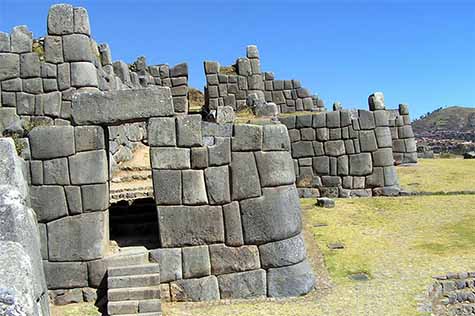Ruins of Sacsayhuaman Fortress Mystery | Inca, Peru

A whole city built in the shape of a puma atop the Andes, one of the most sacred places for the legendary Inca people.
Ancient Cuzco
It seems that some places in the world are, more than others, a veritable mine of unanswered questions, mysteries dating back to times that official history does not even take into account. The former capital of the Inca Empire, the famous Cuzco, in Peru, is certainly one of those places. In the ancient Quechua language, the name of this city means "navel of the world". Cuzco rises 3,400 meters above sea level and, according to official archeology, the first human settlements date back to around 3,000 years. The whole city seems to have been built according to a plan in the form of a puma, the sacred animal of the Incas, the protector of earthly goods.
In his famous book Comentarios Reales de los Incas, one of the first accounts of Inca history and of the Spanish conquest, the writer Garcilaso de la Vega wrote in 1609 about the region of Cuzco: “… with dimensions so inconceivable that one would have thought that a magician had directed the construction, that they were the work of demons rather than human beings made of stones so huge and so numerous that one wonders how the Indians had been able to achieve them, since they knew neither iron nor steel to cut and polish rock, nor oxen nor wagons to transport them."
In the old buildings of Cuzco, the stones of green diorite, a particularly hard to work mineral, are assembled without any type of cement. They are crafted so precisely that they adhere perfectly to each other, preventing a credit card from slipping through. It is difficult to think that the Incas, a people who apparently did not possess advanced technologies (it seems that they did not even know the wheel), could have made such extraordinary architectural works and managed to mold stone as if it would have been a question of working the wax, giving it the strangest shapes and developing an ingenious and very solid system of embedding blocks in the shape of a polygon. In addition, this construction technique was more refined than the methods used in the same period in Europe, although the Old Continent was decidedly more evolved from a scientific and technological point of view.
The Sacsayhuaman fortress mystery

Sacsayhuaman is undoubtedly the most important of all the buildings in Cuzco: a promontory on the outskirts of the city crowned by an enigmatic construction. In the Aymara language, this name means "the place where the falcon comes to be satisfied". But if we see in the plan of Cuzco the shape of a puma, Sacsayhuaman then represents the head of the animal with the walls in broken lines reminiscent of the jaws. The whole complex could hold thousands of men, and perhaps this is why the conquistadors called it "the Fortress", attributing it to military use. Moreover, many researchers believe that it was a religious complex, a sacred place or more precisely a single colossal temple. Legends tell that these walls were already old when the Incas settled in these places, a hypothesis refuted by official archeology which attributes to the Inca emperor Pachacuti the start of construction, in 1438, construction which was to last seventy years.
In Sacsayhuaman, rocks 8 meters high and weighing more than 300 tons adhere perfectly to each other to form puzzles of various shapes. An architectural technical enigma which is present in other buildings of Cuzco - the rocks adhering perfectly to each other - and which develops here on three levels. But in Sacsayhuaman, the mysteries do not concern only the Cyclopean walls.
On the esplanade at the top of the monument, rocks have been identified which appear to be ancient foundations characteristic of polygon-shaped geometric planes. No one has come up with a definitive answer as to the meaning of these enigmatic ruins or what these foundations rested on. It is believed, moreover, that the remains visible today represent only 30% of all that, at one time, had been erected in Sacsayhuaman: indeed, centuries of plunder have left the fortress with only what could not be taken away: the stones. The complex is in perfect alignment with the four cardinal points and the intersecting walls, with the three circles at the top, benefit from an ideal orientation for determining the winter and summer solstices. Assuming that the Sacsayhuaman fortress was really an astronomical observatory, we must deduce that the Incas were capable of achieving a work of such significance. Or does it not all go back to an ancient past about which we still know nothing?









































































































































































































































































































































